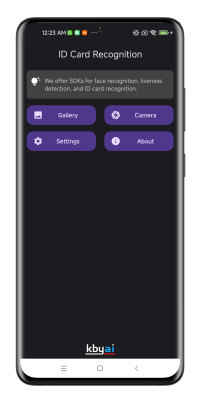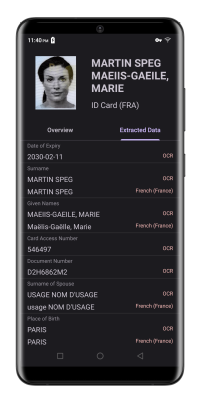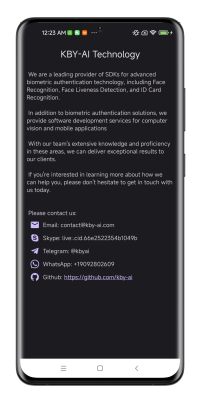The SDK supports recognition of ID cards, passports, and driver’s licenses from over 200 countries.
Our ID document recognition SDK empowers you to automatically extract data from various ID documents, including ID cards, passports, and driver’s licenses.
The SDK supports various ID documents from 200+ countries, making it versatile and useful worldwide.
We have built this solution on multi-platform such as ID card recognition Android, ID card recognition iOS, ID card recognition Flutter, ID card recognition docker, ID card recognition server(Linux/Windows)
Additionally, we ensure the reliability of our SDK by regularly updating it to support new types of ID documents.
Supported operating systems
- Windows
- Linux, Docker
- Android
- iOS
- Kubernetes
Architecture overview
- x86, x64
- armeabi-v7a, arm64-v8a
Available APIs
- Python API (for Windows, Linux)
- C++ API (for Windows, Linux)
- C# API (for Windows)
- HTTP API
- Java API (for Android)
- Kotlin API (for Android)
- Objective-C API (for iOS)
- Swift API (for IOS)
- Flutter plugin (for Android, iOS)
- React-Native plugin (for Android, iOS)
- Ionic-Cordova plugin (for Android, iOS)
Extract these
fields automatically
- Name
- Document Number
- Machine Readable Zone(MRZ)
- Address
- Sex
- Date of Birth
- Place of Birth
- Date of Issue
- Date of Expiry
- Nationality
- Weight
- Height
- Hair Color
- Eyes Color
- ...and more
Grow your business
with our SDK
With our SDKs, you can focus on creating innovative solutions while we handle the complexities of platform compatibility and integration.
Partner with us to drive your business to the next level!
Mobile SDK
- Document Detection
- Information Extraction (OCR)
- Barcode Scanning
- MRZ Parsing
- PDF417 Recognition
- Document Image Extraction
- Portrait Image Extraction
- Document Type Recognition
Server SDK
- Document Detection
- Information Extraction (OCR)
- Barcode Scanning
- MRZ Parsing
- PDF417 Recognition
- Document Image Extraction
- Portrait Image Extraction
- Document Type Recognition
We have developed an ID document recognition API using our Server SDK.
Upload both the front and back images of an ID document, and the API will return the results as a JSON string.
Upload the front or back image of an ID document, and the API will return the results as a JSON string.
We have built a offline ID document recognition app with our Mobile SDK.
This app showcases real-time ID document recognition technology on mobile device.



We have built ID document auto-capture web app via ReactJS
The module detects real-time ID document on the web browser without any server connection.
The component ensures the best image is selected by evaluating the quality of the captured document.
Ready to get started?
Let's talk
We provide on-premises identity verification solutions with a perpetual license,
providing a cost-effective option to help you save your budget significantly.
Flexible licensing terms
Different options to fit your business model
Expert tech support via messenger
We provide 24/7 technical support via WhatsApp, Telegram, and Skype.
Regularly update and free support
We provide regular SDK updates free of charge to our customers.
Robust and high accuracy
Achieve industry-leading accuracy with our technology, ensuring reliable and precise results for your applications.
Simple and cleaning APIs
Easily integrate our SDKs into your projects using our straightforward and user-friendly APIs, streamlining the development process.
Fully-offline, on-device works
Benefit from our SDKs’ capability to work fully offline or on-device, providing seamless functionality even without an internet connection.

